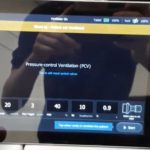Every week FINN looks back at popular or topical videos from its archive – this week Eric Bredin of Stratasys talks about applications for 3D printing.
As well as having a big impact on the way components are produced, a number of aerospace companies are now using their 3D printing technology to print protective visors for healthcare professionals during the COVID-19 pandemic.
FINN talked to Eric Bredin of Stratasys last year about the technology’s latest applications and areas of innovation, particularly within cabin interiors. Stratasys provides tools and services for 3D printing lightweight structures which are certified for the aerospace industry, including tooling to optimise the manufacturing process and directly manufactured parts for cabin interiors.
3D printing can help manufacturing overcome major disruption
Somewhat ahead of his time, Bredin suggested one benefit of 3D printing could be remote or distributed manufacturing at a time when manufacturing faces disruption from issues such as Brexit or trade wars. Many businesses who were using the technology to print aerospace components are now using 3D printing to print vital personal protection equipment items for healthcare professionals. He explained: “Instead of shipping hardware and goods, you could send files,” says Bredin, noting that this requires adequate file protection to ensure intellectual property rights and that the product is printed properly.
Within the aerospace sector, Bredin said 3D printing had become “a great asset for the airline industry” with more and more companies looking to streamline their manufacturing processes, optimising weight and costs.
He explained: “Many manufacturers have been adopting the technology, looking at specific parts inside the cabin – sometimes you don’t see them, sometimes you start seeing them – you don’t know that it’s 3D printed, but it’s there, and [we will see this] more and more in the future.”
Taking innovation even further, Stratasys has been looking at how to integrate details such as texture into the design file to reduce post-production processing, such as sanding. A key area now in 3D printing is looking at further integrating processes to reap even more advantages from the use of additive manufacturing.

